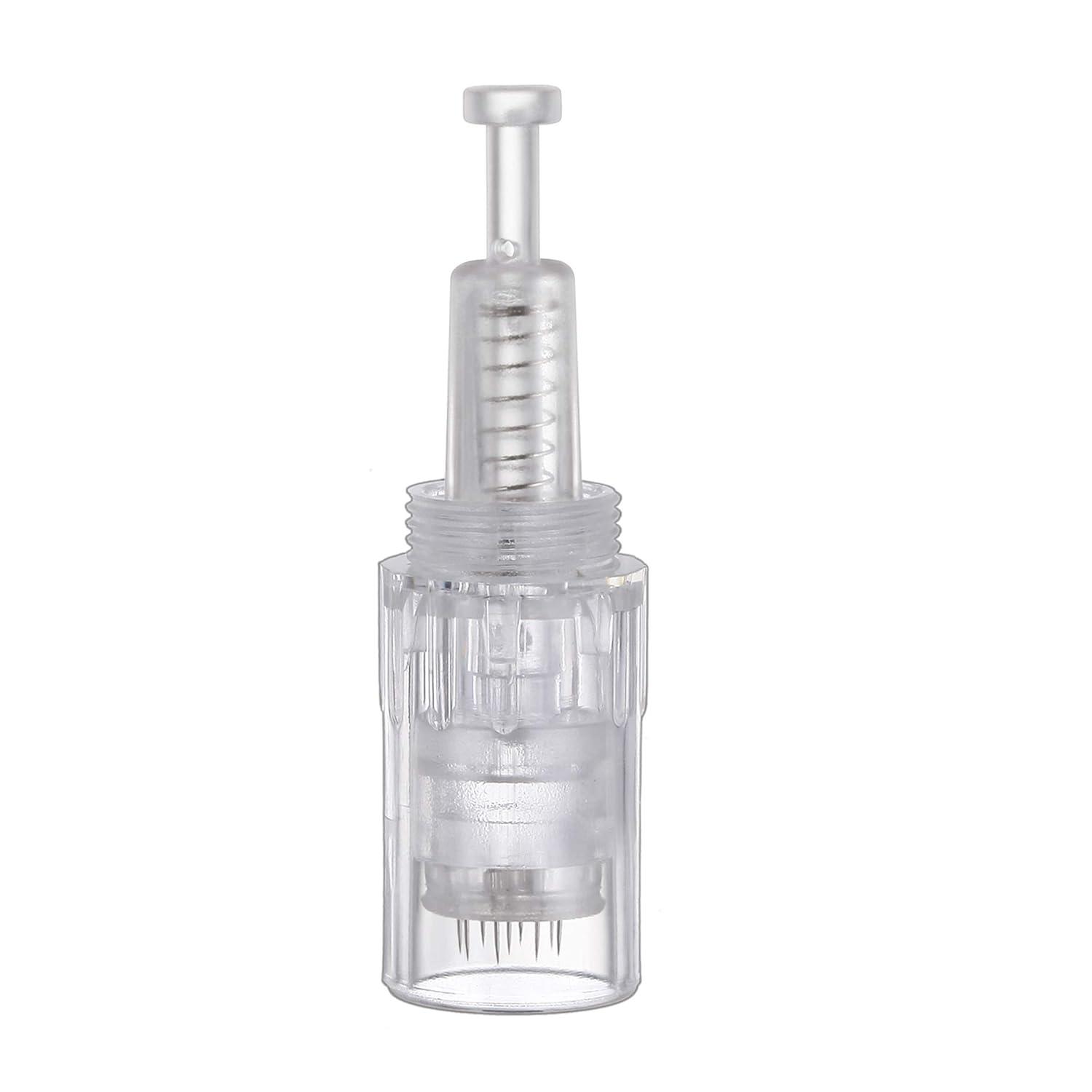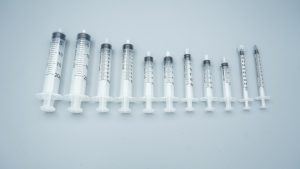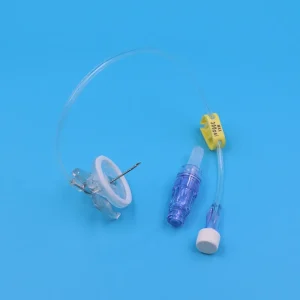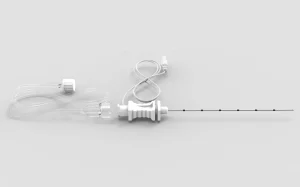Microneedling cartridges have revolutionized the beauty industry as a minimally invasive skin rejuvenation solution. As the consumable core of derma pen devices, derma pen needles directly impact treatment efficacy and safety. This comprehensive guide explores how to select quality microneedling cartridge needles, current market dynamics, and the global manufacturing landscape.
Selecting the Right Derma Pen Needles: What You Need to Know
Choosing the optimal derma pen needles requires evaluating three critical factors: pin configuration, quality standards, and cost-effectiveness.
Pin Configuration: Matching Needles to Treatment Goals
Different microneedling cartridge configurations serve distinct purposes:
- 9-pin microneedling cartridges: Ideal for precision spot treatments targeting acne scars, fine lines, and localized concerns. Perfect for detailed work on small areas.
- 12-pin derma pen needles: The industry standard for facial treatments, offering the optimal balance between coverage and precision for routine procedures.
- 24-pin microneedling cartridge needles: Designed for larger surface areas including stretch marks and broader scar treatments, significantly improving efficiency.
- 36-pin cartridges: Professional-grade solution for comprehensive facial treatments, delivering dense, uniform coverage for advanced aesthetic procedures.
- 42-pin needles: Maximum coverage configuration for body treatments on areas like abdomen and back, dramatically reducing treatment time.
Quality Standards: Non-Negotiable Requirements
Premium derma pen needles must meet stringent quality benchmarks:
Material Excellence: Medical-grade stainless steel (316L or 304) conforming to medical device standards with CE, FDA, and ISO13485 certifications is essential. Laser-cut technology ensures consistent needle tip geometry, while precision grinding guarantees sharpness and minimal skin trauma.
Safety Features: Single-use design prevents cross-contamination, secure cartridge locking mechanisms prevent detachment during procedures, and hermetically sealed sterile packaging maintains hygiene integrity.
Device Compatibility: Verify microneedling cartridge compatibility with your specific derma pen model. Standard bayonet mounts typically offer broader universal compatibility.
Cost-Effectiveness: Smart Purchasing Strategies
Factory-direct sourcing of microneedling cartridge needles typically delivers 30-50% savings compared to distributors. Bulk purchasing unlocks additional discounts, while long-term partnerships enable customization options. Calculate per-treatment costs rather than focusing solely on unit prices, and factor in warranty terms and return policies. Quality issues create hidden costs that far exceed initial savings from budget alternatives.
Global Microneedling Market: Trends Shaping the Industry
The global microneedling market is experiencing explosive growth. Industry data indicates the market surpassed $700 million in 2023, with projected CAGR of 8-12% through 2030. The Asia-Pacific region leads growth at over 15% annually, driven by rising aesthetic consciousness and treatment accessibility.
Technology Innovation: Three Key Developments
Smart Automation: Electric derma pen devices are replacing manual rollers, featuring intelligent speed adjustment and digital displays for enhanced precision and consistent results.
Material Advancement: Nano-coating technology reduces skin friction, specialized alloys extend microneedling cartridge durability, and biodegradable materials are emerging as sustainable alternatives.
Enhanced Safety: Anti-counterfeiting measures, smart recognition systems preventing cartridge reuse, and advanced sterile packaging technology collectively elevate treatment safety standards.
Expanding Applications Beyond Traditional Beauty
Derma pen needles now serve diverse applications: traditional anti-aging and skin rejuvenation, medical aesthetics (scar revision, stretch mark treatment), transdermal drug delivery (serums, growth factors), hair loss treatment (scalp microneedling), and body contouring (cellulite improvement).
Consumer Trends: The Home-Use Revolution
Home-use microneedling cartridges are capturing significant market share as consumers seek professional-grade results. E-commerce channels dominate sales growth, while professional aestheticians demand customized derma pen needles for differentiated services. Sustainability has become a decisive factor, with eco-friendly packaging and recyclable designs gaining preference.
Global Manufacturing Landscape: Where Derma Pen Needles Are Made
China: The Manufacturing Powerhouse
Chinese manufacturers dominate global microneedling cartridge production through comprehensive supply chain integration. The Pearl River Delta and Yangtze River Delta regions, particularly Shenzhen, Guangzhou, and Suzhou, host complete manufacturing ecosystems.
Production Capacity: Annual output reaches tens of millions of units with automated production lines ensuring consistency. Rapid turnaround times meet urgent market demands.
Price Competitiveness: Chinese derma pen needles cost 40-60% less than Western alternatives due to economies of scale. Mature OEM/ODM services accommodate small custom orders.
Quality Certification: Leading Chinese factories hold CE, FDA, and ISO13485 certifications, with product quality meeting international standards. Export volumes grow annually as global recognition increases.
South Korea: Innovation and Premium Positioning
Korean manufacturers excel in beauty technology R&D, producing microneedling cartridge needles with refined tip processing and designs optimized for Asian skin types. Korean beauty brands command global recognition, positioning products in mid-to-premium segments 30-50% above Chinese pricing. Stylish designs, premium packaging, and strong marketing capabilities drive Asian market dominance.
Western Manufacturers: Medical-Grade Excellence
European and American producers target professional medical aesthetics, pricing derma pen needles 2-3x higher than Chinese alternatives. Advantages include rigorous regulatory compliance, comprehensive quality control systems, extensive clinical validation, and strong brand trust in Western medical institutions. These products emphasize medical device classification and often qualify for insurance coverage.
Emerging Manufacturing Regions
Southeast Asian countries (Thailand, Malaysia) increasingly handle mid-to-low-tier orders with labor cost advantages. India leverages pharmaceutical manufacturing infrastructure for medical device production, offering highly competitive pricing for domestic and regional markets.
OEM Customization & Purchasing Recommendations
Custom Solutions for Brand Differentiation
As competition intensifies, OEM microneedling cartridges enable brand differentiation through:
Logo Customization: Laser engraving on cartridge bayonets, custom packaging printing, and personalized instruction materials.
Specification Customization: Non-standard pin configurations (16-pin, 30-pin), needle length variations (0.25mm-3.0mm), and specialized material selection.
Packaging Customization: Brand color schemes, multilingual packaging, and integrated anti-counterfeiting features.
Selecting Your OEM Partner: Critical Evaluation Criteria
Production Credentials: Verify medical device manufacturing licenses, quality management system certifications, and complete export qualifications.
R&D Capabilities: Assess independent research teams, patent portfolios, and new product development velocity.
Manufacturing Scale: Evaluate monthly capacity, reserve capacity buffers, and delivery consistency track records.
Service Infrastructure: Review minimum order quantities, sampling timelines and costs, after-sales response times, and quality issue resolution processes.
Risk Management: Protecting Your Investment
Quality Control Protocol: Implement comprehensive incoming inspection (packaging integrity, sterile seal verification, visual needle inspection, batch number and expiration validation), pre-use verification (damage assessment, needle completeness, secure mounting, tip sharpness testing), and scientific inventory management (FIFO principles, temperature/humidity control, regular expiration monitoring, traceability systems).
Legal Risk Mitigation: Conduct thorough supplier credential audits including business licenses, production permits, quality certifications, and product testing reports. Execute formal procurement contracts with explicit quality liability clauses and maintain complete transaction documentation.
Supply Chain Resilience: Establish multi-supplier networks with backup sources, maintain optimal inventory levels, monitor regulatory changes, and distribute procurement to minimize disruption risks. Consider product liability insurance for additional protection.
Keys to Successful OEM Partnerships
Clear Requirements: Provide detailed product specifications, explicit quality standards, and realistic pricing expectations.
Sample Validation: Conduct small-batch trial production, obtain third-party testing certification, and gather market feedback before scaling.
Long-Term Planning: Build strategic partnerships through long-term supply agreements and collaborative new product development initiatives.
Conclusion: Building Success with Quality Derma Pen Needles
Derma pen needles selection encompasses product quality, cost management, and supply stability. Chinese manufacturing, with its complete supply chains, robust production capacity, and exceptional value proposition, has become the global epicenter for microneedling cartridge production.
For distributors and brand owners, partnering with certified, quality-focused, service-oriented manufacturers for OEM microneedling cartridges delivers cost efficiency while enabling rapid market response and competitive differentiation.
As consumers demand higher safety and efficacy standards, only manufacturers and brands committed to quality excellence and continuous innovation will thrive in this competitive landscape. Evaluate suppliers holistically across quality, pricing, service, and innovation capabilities. Prioritize quality control and risk management to deliver safe, effective, premium microneedling experiences that build lasting customer trust and market leadership.
Key Takeaways:
- 9/12/24/36/42-pin configurations serve different treatment needs
- Chinese manufacturers offer 40-60% cost savings with international certifications
- Global market growing at 8-12% CAGR through 2030
- OEM customization enables brand differentiation
- Quality control and supplier verification are non-negotiable





